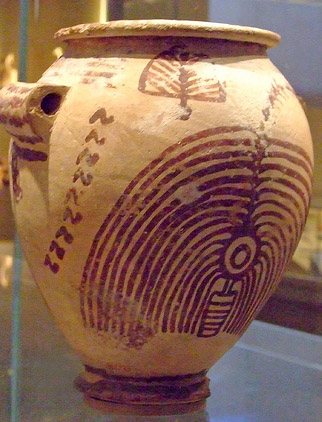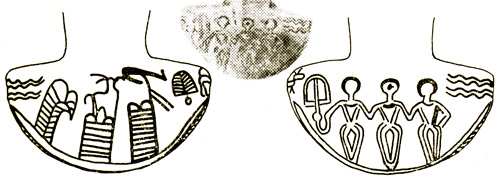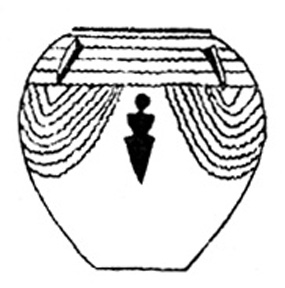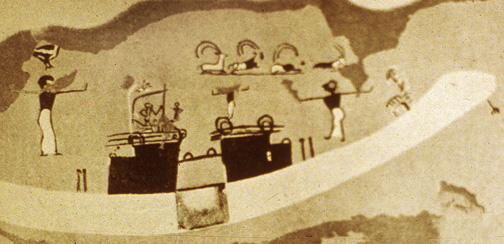Predynastic Kemetic Priestesses: the Testimony of Naqada Ceramics and Rock Art

Some of the boat scenes show no human figures, but the deck post or "standard" is shaped like a woman standing with her arms curved like the priestess figures. Also shown are numerous ceremonial fans like the ones held by the women in the images below.

Another theme is this mysterious symbol, which has been proposed as a tree symbol. Some versions resemble a bee. The swiriling patterns resemble representations of women's hair in East African and Arabian rock art. The fan appears again at top.

A threefold form of the boat priestess appears on this bird-shaped pot now in a Swiss museum. The woman at left holds the fan, which also floats above the prow of the boat on the reverse side. Here is another examle of a priestess motif that was expressed in multiple media. A nearly identical scene appears ...

on the golden haft of a flint dagger, as Joanna Aksamit discovered. "The gold handle of a fishtail dagger from Gebelein (Upper Egypt)" in Late Prehistory of the Nile Basin and the Sahara, Poznan Archaeological Museum, 1989, pp. 325-32.

And other variations of the same female silhouette were painted singly on pots of the same period. This outline is shaped like countless neolithic figurines created along the Nile in both Egypt and Sudan, in clay and ivory and bone.

But wait, there's more. The invoking priestesses also appear above a riverboat in a tomb mural at Nekhen (Hierakonpolis), the first center of dynastic power. Here three women outstretch their arms horizontally.

At left, a rolled-out drawing of an ochre-painted pot, with riverboats and standards, invoking women, flamingos, lizards, and other animals. Between the two women is that symbol again (tree? bee?) and here it looks like a moth. It seems to have some connection with the ceremonial fan as well, which has a similar shape.
Suppressed Histories Archives | Articles | Gallery | Online Courses